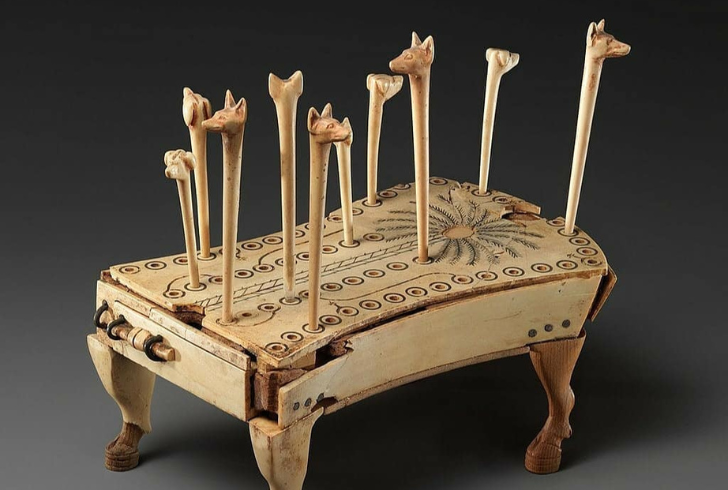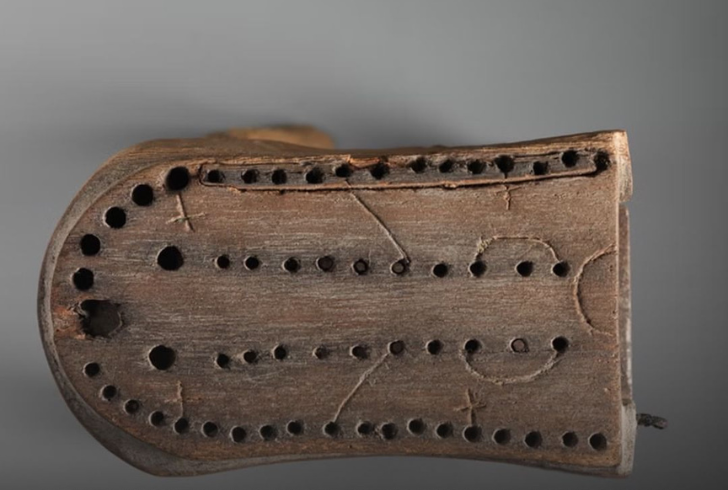An intriguing discovery in Azerbaijan has shed light on a remarkable aspect of ancient human interaction—board games. Archaeologists have unearthed artifacts that suggest the existence of a board game dating back to around 2000 BCE, specifically on the Abşeron Peninsula and within the Gobustan Reserve.
The evidence points to six distinct designs carved into rocks, which bear a striking resemblance to the playing surface of “Hounds and Jackals,” a game also known as the "Fifty-Eight Holes." This fascinating find could potentially shift the narrative about the origins of this ancient pastime, indicating that it may have emerged in southwestern Asia instead of Egypt, as previously believed.
The Significance of the Discovery
The findings are a significant milestone for researchers like Walter Crist from Leiden University and Rahman Abdullayev of the Minnesota Historical Society. They argue that these ancient board game artifacts challenge the long-held assumption that “Hounds and Jackals” originated solely in Egypt. The geographical spread of these discoveries suggests that the game might have fostered connections between different cultures in antiquity.

Instagram | historiante_ | Hounds and Jackals is an ancient race game where two players navigate their pieces through 58 holes to be the first to finish.
The social aspect of board games cannot be overlooked. Historically, they have served as a medium for bringing people together, transcending social classes and geographical barriers. The artifacts found in Azerbaijan are believed to have been used by a diverse range of individuals, including cattle herders. This highlights how board games, such as “Hounds and Jackals,” played a pivotal role in forging social bonds across various communities.
Cultural Connections through Board Games
The archaeological evidence underscores the idea that certain games enjoyed regional popularity, linking cultures that frequently interacted. The game of “Fifty-Eight Holes” likely served as a conduit for social engagement during the second millennium BCE, bridging divides between different groups in Egypt and southwestern Asia. This particular board game seems to have acted as a common thread that connected diverse cultures, enhancing interactions among people.
The rich history of board games is expansive. From ancient Egypt to modern times, these games have held a cherished place in human culture. The earliest records hint at someone marking patterns in dust, which initiated a shared experience among individuals. Although the precise details of those initial games remain elusive, the artifacts left behind—be it pieces, dice, or the boards themselves—offer valuable insights into the evolution of human recreation.
Understanding “Hounds and Jackals”
“Hounds and Jackals” is classified as a race game, much like contemporary favorites such as Snakes and Ladders. Players maneuver pieces around a designated track, striving to be the first to reach the finish line. The game is played using 58 strategically arranged holes, and each player utilizes five pieces shaped like hounds and five like jackals. The objective is clear: move all pieces to the end before your opponent does.
To date, around 70 game boards associated with “Hounds and Jackals” have been discovered, with many located in Egypt. The oldest known example was unearthed in a tomb at El-Assasif, dating back to approximately 2064 to 1952 BCE. These findings previously led experts to conclude that the game originated in Egypt before spreading to other regions. However, the recent discoveries in Azerbaijan, such as those made at Ağdaşdüzü, Çapmalı, Yeni Türkan, and Dübəndi, indicate that these boards may have emerged around the same time or even earlier than the El-Assasif board.
A Game for All Walks of Life

Instagram | maghrebinsidernews | Researchers are rethinking the origins of Hounds and Jackals known as Fifty-Eight Holes based on new evidence from Azerbaijan.
The diversity of the sites where the artifacts were found reveals a fascinating truth: “Hounds and Jackals” appealed to a broad spectrum of society. For example, one game board was located in a cave used as a winter shelter by cattle herders, while others were discovered in the tombs of the affluent. This widespread presence across various social contexts suggests that the game was more than just entertainment; it functioned as a tool for building connections and fostering friendships among individuals of different backgrounds.
The researchers involved in the study emphasize the significance of the board game, stating, “Regardless of its origins, ‘Fifty-Eight Holes’ quickly gained traction and was embraced by a diverse array of individuals—from the elite in ancient Egypt to the cattle herders in the Caucasus.” This sentiment speaks to the universal appeal of games as facilitators of social interactions.
The Enduring Legacy of Board Games
The discovery of the ancient board game artifacts in Azerbaijan not only contributes to our understanding of historical recreation but also highlights the powerful role games play in human connections. They act as social lubricants, bridging gaps across cultures and social classes. This timeless quality of board games is as relevant today as it was thousands of years ago.
As humanity continues to evolve, the communal spirit fostered through games remains a cherished aspect of our shared experience, reminding us of the importance of connection and camaraderie.

